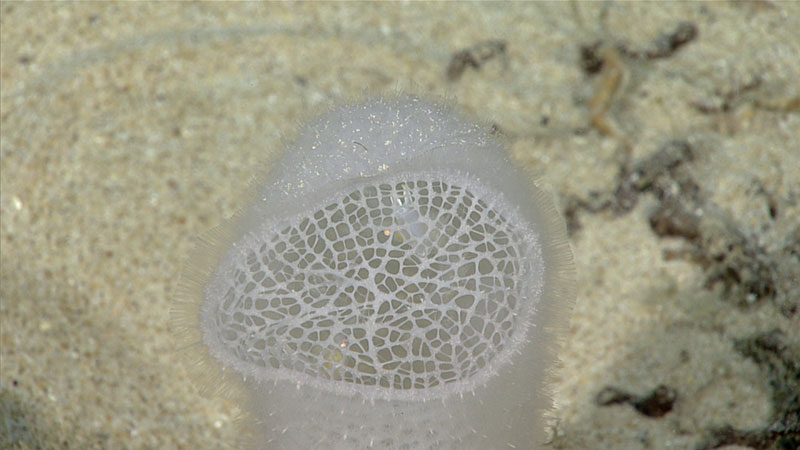Are glass sponges made of glass?
Glass sponges have skeletons made of silica, which is the same material used to make glass, but glass sponges are not glass, per se.

This glass sponge (in the family Euplectellidae) was collected during Dive 04 of the 2019 Southeastern U.S. Deep-sea Exploration. If you look closely, you can see a shrimp that lives within the sponge. Image courtesy of the NOAA Office of Ocean Exploration and Research, 2019 Southeastern U.S. Deep-sea Exploration. Download image (jpg, 66 KB).
Glass sponges, or hexactinellids, belong to the phylum Porifera. These animals are common only in the deep ocean. Their tissues contain glass-like structural particles made of silica. The many tiny siliceous elements of a glass sponge’s skeleton are called “spicules.” Unlike most sponges, glass sponges produce extremely large spicules that fuse together in beautiful patterns to form a “glass house”; a complex skeleton that will often remain intact even after the sponge itself dies.
The skeleton of the glass sponge together with various chemicals provide defense against many predators. Some starfish, however, are known to feed on glass sponges.
Glass sponges live attached to hard surfaces and consume small bacteria and plankton that they filter from the surrounding water.
The most famous glass sponge is a species of Euplectella, known as the “Venus flower basket,” which builds its skeleton in a way that entraps a certain species of shrimp inside.